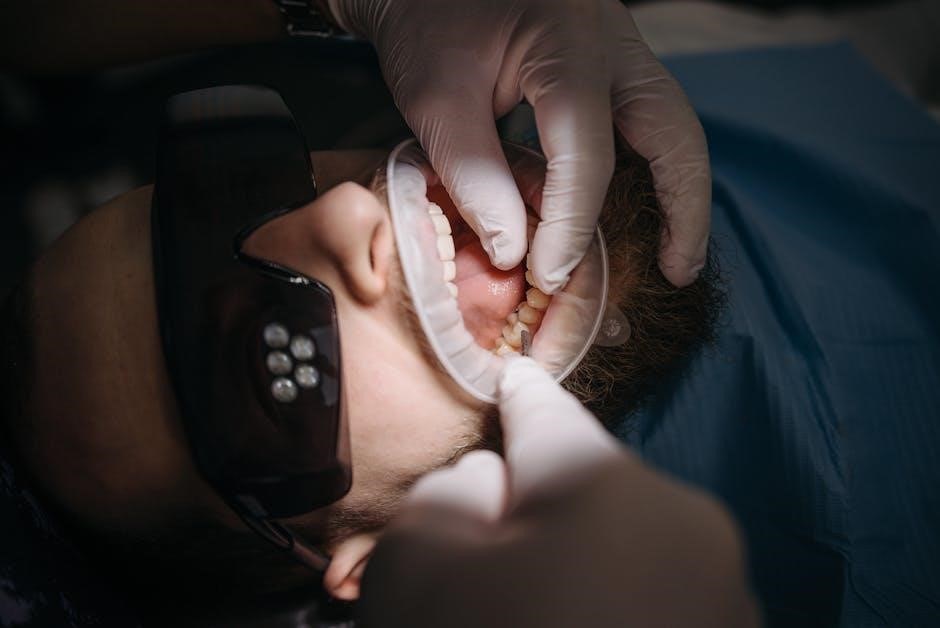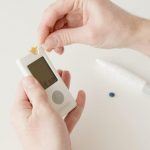
Oral motor exercises are non-speech activities involving sensory stimulation to improve coordination and strength of lips, tongue, and jaw muscles, enhancing speech and swallowing abilities for therapy and daily use.

1.1 Definition and Purpose
Oral motor exercises are non-speech activities designed to enhance the coordination, strength, and range of motion of oral and facial muscles. These exercises target the lips, tongue, jaw, and soft palate, improving their ability to perform precise movements. The primary purpose is to address difficulties in speech, swallowing, and overall oral function. By strengthening these muscles, individuals can achieve better articulation, swallowing abilities, and facial control. These exercises are often used in therapeutic settings to support rehabilitation or developmental needs, tailored to specific goals for improved oral motor function.
1.2 Importance of Oral Motor Skills
Oral motor skills are essential for clear speech, effective swallowing, and overall communication. They enable precise movements of the lips, tongue, and jaw, which are crucial for articulating sounds and maintaining proper oral function. Strong oral motor skills enhance speech clarity, reduce eating difficulties, and improve swallowing abilities. For children, these skills are foundational for language development, while for adults, they support maintaining independence and quality of life. Weak oral motor skills can lead to challenges in communication and daily activities, making targeted exercises vital for improvement and rehabilitation.

Benefits of Oral Motor Exercises
Oral motor exercises strengthen muscles, improve coordination, and enhance swallowing and speech clarity, boosting overall quality of life and making daily activities easier and more efficient.
2.1 Improved Speech Clarity
Oral motor exercises significantly enhance speech clarity by strengthening the muscles used in articulation, such as the tongue and lips. Improved coordination and control allow for clearer pronunciation of words and sounds. These exercises help individuals, especially children, develop precise movements needed for speech. Consistent practice can lead to noticeable improvements in enunciation and overall communication skills, making verbal expression more effective and confident.
2.2 Enhanced Swallowing Abilities
Oral motor exercises play a crucial role in improving swallowing abilities by strengthening the muscles involved in this process. These exercises enhance coordination between the tongue, lips, and jaw, ensuring food and liquids are moved safely and effectively. Regular practice can reduce the risk of choking and improve overall swallowing function, particularly for individuals with disorders. Consistent engagement in these activities leads to better control and efficiency, making swallowing a more natural and less challenging process for both children and adults.
2.3 Strengthened Oral Muscles
Oral motor exercises effectively strengthen the muscles of the tongue, lips, and jaw, improving their endurance and function. Activities like tongue protrusion, retraction, and lateral movements target specific muscle groups, enhancing overall oral motor control. For children, exercises such as blowing bubbles or holding lollipop sticks between lips promote lip strength and coordination. Adults can benefit from similar practices, along with resistance exercises, to build muscle tone. Strengthening these muscles supports clearer speech, better swallowing, and improved overall oral function, making daily activities easier and more efficient.
2.4 Better Coordination and Control
Oral motor exercises enhance coordination and control by improving the timing, precision, and rhythm of muscle movements. Activities like tongue exercises, blowing bubbles, and mirror feedback help synchronize lip, tongue, and jaw actions. These exercises promote better sensory-motor integration, allowing for more accurate and efficient movements. Improved coordination benefits both children and adults, aiding in clearer speech and swallowing. Regular practice strengthens neural pathways, leading to enhanced overall oral motor function and better control during daily activities, making communication and eating easier and more effective.
Types of Oral Motor Exercises
Oral motor exercises include tongue, lip, and jaw movements, such as protrusion, retraction, and blowing activities, designed to strengthen and coordinate oral muscles for improved function.
3.1 Tongue Exercises
Tongue exercises are essential for improving oral motor skills. Activities include tongue extension, where the tongue is protruded between the lips, and retraction, where it touches the roof of the mouth. These movements strengthen tongue muscles and enhance coordination. Additionally, exercises like tongue lateralization, where the tongue moves side to side, and elevation, where it presses against the palate, are beneficial. These exercises improve speech clarity, swallowing, and overall oral function, making them a cornerstone of oral motor therapy for both children and adults.
3.2 Lip Exercises
Lip exercises target the muscles around the mouth to improve strength, coordination, and control. Activities include puckering, blowing, and holding lollipop sticks between lips for closure. These exercises enhance lip mobility, crucial for clear speech and effective swallowing. Techniques like mirroring games, where individuals imitate lip movements, add engagement. Strengthening lip muscles helps with articulation and reduces speech difficulties, making these exercises beneficial for both children and adults in oral motor therapy programs.
3.3 Jaw Exercises
Jaw exercises focus on strengthening and improving the coordination of the jaw muscles. Activities include controlled opening and closing of the mouth, lateral jaw movements, and gentle chewing motions. These exercises help enhance jaw alignment, reduce tension, and improve overall oral motor function. Strengthening the jaw muscles supports clearer speech, better chewing, and more efficient swallowing. Regular practice can also alleviate jaw-related discomfort and promote better oral coordination for individuals of all ages.
3.4 Palate and Laryngeal Exercises
Palate and laryngeal exercises target the soft palate and voice box muscles to improve coordination and strength. Activities include soft palate lifts, vowel sound repetitions, and gentle humming. These exercises enhance resonance, voice clarity, and swallowing efficiency. Strengthening the soft palate helps reduce nasal speech and improves airflow during breathing. Laryngeal exercises, such as pitch variations and controlled breathing, support better vocal control and articulation. Regular practice can address speech and swallowing challenges, promoting overall oral motor function and communication skills for individuals of all ages.
Oral Motor Exercises for Children
Oral motor exercises for children involve fun, engaging activities like tongue games, lip exercises, and sensory play to improve speech and motor skills through playful interaction.
4.1 Age-Specific Activities
Oral motor exercises for children are tailored to their age and developmental stage. Infants benefit from sensory play, while toddlers engage in activities like blowing bubbles or tongue games. Preschoolers can participate in structured exercises, such as licking lips or holding lollipops, to improve lip closure and tongue coordination. These activities are designed to be fun and engaging, promoting natural motor skill development through playful interaction and sensory stimulation.

4.2 Fun and Engaging Techniques
Oral motor exercises for children are most effective when presented as playful activities. Techniques like blowing bubbles, playing “Tongue Simon Says,” or using lollipops to practice lip closure make learning enjoyable. Mirrors can be used for feedback, allowing kids to see their progress. These engaging methods help children develop motor skills naturally, turning exercises into games that foster coordination and strength without feeling like a chore. Fun approaches ensure consistent participation and positive outcomes in oral motor development.
4.3 Role of Play in Motor Skill Development
Play is a cornerstone of motor skill development in children, as it transforms oral exercises into enjoyable activities. Games like blowing bubbles or using mirrors for tongue movements create a fun, interactive environment. Playful techniques, such as lollipop exercises for lip closure, encourage natural learning and engagement. By integrating play, children develop coordination, strength, and control without feeling pressured, fostering a positive association with oral motor exercises and promoting long-term progress in speech and swallowing abilities.

Oral Motor Exercises for Adults
Oral motor exercises for adults focus on rehabilitation, improving articulation, and enhancing swallowing function, often used in therapy to strengthen muscles and address specific speech or swallowing challenges.
5.1 Rehabilitation and Therapy
Oral motor exercises play a crucial role in rehabilitation for adults, aiding recovery from conditions like stroke or trauma. Techniques such as tongue protrusion, retraction, and mirror feedback improve muscle coordination and strength. These exercises target lips, jaw, and tongue muscles, enhancing speech and swallowing abilities. Consistency is key, with activities tailored to individual needs. Professional guidance ensures safety and effectiveness, making oral motor therapy a vital tool for restoring functional skills and improving quality of life in adults undergoing rehabilitation.
5.2 Improving Articulation and Pronunciation
Oral motor exercises are essential for enhancing articulation and pronunciation in adults. Techniques like tongue protrusion, retraction, and lateral movement strengthen tongue muscles, improving speech clarity. Lip exercises, such as puckering and blowing, refine articulation of specific sounds. Mirror feedback helps adults visualize and correct tongue and lip positioning. These exercises target muscle coordination, enabling clearer enunciation and more precise pronunciation, which are critical for effective communication and confidence in speaking.
5.3 Enhancing Swallowing Function
Oral motor exercises significantly improve swallowing function by strengthening the muscles involved in this process. Techniques such as tongue extension, retraction, and lateral movement enhance coordination and control. Sensory stimulation, like touching the tongue or lips, can also aid in improving swallowing reflexes. These exercises target the tongue, palate, and laryngeal muscles, ensuring better timing and efficiency during swallowing. Regular practice reduces swallowing difficulties and enhances overall safety, making meals more comfortable and enjoyable for adults with swallowing challenges.
How to Perform Oral Motor Exercises
Use mirrors for feedback, maintain proper posture, and incorporate sensory stimulation. Techniques include tongue protrusion, lip closure, and jaw movements to enhance muscle coordination and control effectively.
6.1 Proper Techniques and Posture
Proper techniques and posture are essential for effective oral motor exercises. Sit or stand upright to align the head, neck, and spine. Use a mirror to observe movements, ensuring accurate execution. Begin with gentle exercises like tongue protrusion or lip closure, gradually increasing intensity. Maintain relaxed facial muscles and focus on controlled, precise movements. Avoid overexertion and monitor for fatigue. Consistent practice with proper form enhances muscle coordination and strength, leading to improved speech and swallowing abilities; Always follow guided instructions or consult a professional for personalized techniques.
6.2 Use of Mirrors for Feedback
Mirrors are invaluable tools for providing visual feedback during oral motor exercises. They allow individuals to observe their tongue, lip, and jaw movements in real-time, ensuring proper form and technique. By watching their reflections, users can correct misalignments, track progress, and maintain motivation. Mirrors also help in identifying areas needing improvement, such as lip closure or tongue protrusion. Regular use enhances self-awareness and accuracy, leading to more effective and targeted practice. This visual guidance is particularly beneficial for both children and adults engaging in oral motor exercises.
6.3 Incorporating Sensory Stimulation
Incorporating sensory stimulation enhances oral motor exercises by engaging the senses to improve muscle response and coordination. Techniques include using textured tools, varying temperatures, or different tastes to stimulate the tongue, lips, and palate. For example, cold teething toys or soft brushes can provide tactile feedback, encouraging proper movement and awareness. Sensory activities like blowing bubbles or sucking through straws also add an engaging element, making exercises more effective and enjoyable, especially for children. This approach helps develop stronger oral motor skills through multisensory engagement.

Creating a Daily Routine
Establishing a consistent routine involves setting specific goals, scheduling regular practice times, and tracking progress to ensure steady improvement in oral motor skills and overall development.
7.1 Setting Goals and Objectives
Setting clear, specific goals is essential for an effective oral motor routine. Goals should be tailored to individual needs, such as improving tongue extension or lip closure. Measurable objectives, like increasing tongue strength or enhancing articulation, help track progress. Use exercises from oral motor PDF guides to align goals with broader aims, such as improved speech clarity or swallowing function. Regularly review and adjust goals to ensure they remain relevant and challenging, fostering consistent improvement and engagement in the routine.
7.2 Scheduling and Consistency

A well-structured schedule is crucial for consistent progress in oral motor exercises. Allocate specific times daily, such as morning or evening, to ensure routines become a habit. Consistency helps strengthen oral muscles and improve coordination. Use oral motor PDF guides to plan sessions, incorporating activities like tongue protrusion or lip closure. Aim for short, focused practices rather than lengthy sessions. Regularity enhances muscle memory and skill development, leading to better overall outcomes in speech and swallowing abilities over time.
7.3 Tracking Progress and Adjustments
Regularly tracking progress in oral motor exercises ensures personalized adjustments for optimal results. Use oral motor PDF guides to document improvements in speech clarity, swallowing, and muscle strength. Maintain a log to note advancements and areas needing focus. Adjustments may involve increasing exercise intensity or incorporating new activities based on progress. Feedback from mirrors and sensory tools helps refine techniques. Celebrate milestones to stay motivated and tailor routines for continuous improvement, ensuring exercises remain effective and engaging over time.

Oral Motor Exercises PDF Resources
Downloadable oral motor exercises PDF guides offer structured worksheets, printable charts, and interactive tools for effective practice and tracking progress in speech and swallowing improvement.
8.1 Downloadable Worksheets and Guides
Downloadable oral motor exercises PDF worksheets provide structured activities for improving speech, swallowing, and muscle coordination. These guides include tongue exercises like protrusion and retraction, lip exercises for closure, and jaw movements. They often feature visual aids and step-by-step instructions, making them accessible for both children and adults. Printable charts allow users to track progress, while interactive elements enhance engagement. These resources are ideal for therapists, parents, and individuals seeking to strengthen oral motor skills in a guided and organized manner.
8.2 Printable Exercise Charts
Printable oral motor exercises PDF charts offer a visual and organized way to track progress. These charts typically include exercises like tongue protrusion, lip closure, and jaw movements, with space to monitor daily practice. They provide a clear schedule and visual reminders, making it easier to stay consistent. Many charts are designed for specific needs, such as children or adults, and can be customized to focus on areas requiring improvement. This tool helps users and therapists maintain accountability and visualize advancements in oral motor skills over time.
8;3 Interactive Digital Tools
Interactive digital tools for oral motor exercises provide engaging and dynamic ways to practice. Apps and online platforms offer guided exercises, progress tracking, and customizable routines. These tools often include videos, animations, and timers to ensure proper technique. Some feature gamification elements to make practice fun, especially for children. Digital tools also allow for easy sharing of progress with therapists or caregivers. They are accessible on smartphones, tablets, or computers, making consistent practice convenient and adaptable to individual needs, enhancing overall engagement and effectiveness in improving oral motor skills.
Case Studies and Success Stories
Real-life examples highlight significant improvements in speech and swallowing through consistent oral motor exercises; Individuals have achieved enhanced clarity, better coordination, and improved quality of life, showcasing effectiveness.
9.1 Improvements in Speech and Swallowing
Oral motor exercises have shown significant benefits in enhancing speech clarity and swallowing function. Activities like tongue protrusion and lip exercises strengthen muscles, improving articulation and coordination. Patients often report better control over tongue movements, leading to clearer speech. Swallowing abilities also improve as exercises target the muscles involved in this process. These improvements are well-documented in case studies, demonstrating the effectiveness of consistent practice. The combination of strengthened muscles and enhanced coordination results in more efficient and comfortable swallowing, along with improved overall communication skills.
9.2 Enhanced Quality of Life
Oral motor exercises significantly improve daily activities, reducing challenges in communication and eating. Enhanced speech clarity and swallowing abilities boost confidence, allowing individuals to engage more freely in social interactions. Improved muscle control reduces frustration and embarrassment, fostering a more positive self-image. These exercises also make mealtimes easier and less stressful, promoting better nutrition and overall well-being. By addressing these fundamental skills, oral motor exercises contribute to a more independent and fulfilling life, enhancing quality of life for individuals of all ages.
9.3 Real-Life Examples of Progress

Individuals practicing oral motor exercises often experience remarkable improvements. For instance, a child with speech difficulties may show enhanced clarity after consistent tongue and lip exercises. Adults undergoing rehabilitation post-stroke or injury frequently regain swallowing function and articulation. One case involved a child with apraxia achieving clearer speech through targeted tongue movements. Another example is an adult improving swallowing safety after practicing specific jaw and palate exercises. These real-life successes highlight the transformative impact of oral motor exercises on communication and daily functioning, demonstrating tangible progress over time.
Safety and Precautions
Avoid overexertion during exercises to prevent muscle strain. Monitor for signs of fatigue and stop if discomfort occurs. Consult a professional if pain persists or progress stalls.
10.1 Avoiding Overexertion
Avoiding overexertion is crucial to prevent muscle strain or discomfort. Start with gentle exercises and gradually increase intensity. Use mirrors for feedback to ensure proper technique. Listen to your body and stop if pain or fatigue occurs. Overexertion can lead to setbacks, so prioritize moderate practice. Consult a professional if discomfort persists. Proper pacing ensures safe and effective progress in oral motor exercises, promoting long-term benefits without risking injury or burnout.
10.2 Monitoring for Fatigue
Monitoring for fatigue is essential to ensure safe and effective oral motor exercises. Watch for signs like muscle weakness, decreased coordination, or difficulty maintaining proper form. Regular breaks can help prevent exhaustion. Use mirrors to observe facial muscles and movement accuracy. If fatigue sets in, stop the exercise to avoid strain or injury. Adjust the routine based on individual tolerance and progress. Consulting a speech-language pathologist can provide personalized guidance to manage fatigue effectively and maintain a balanced practice routine.
10.3 When to Consult a Professional
Consult a professional if you experience persistent difficulties with speech, swallowing, or oral motor function. Signs like slurred speech, drooling, or chewing issues may indicate the need for expert guidance. Speech-language pathologists can assess muscle function and provide tailored exercises. They also address underlying conditions affecting oral motor skills. Seeking professional help ensures safe and effective progress, especially for individuals with neurological or developmental challenges. Regular check-ins can refine techniques and address any emerging concerns, promoting optimal outcomes and overall well-being.

Oral motor exercises are essential for improving speech, swallowing, and muscle strength. Consistent practice enhances oral motor skills, benefiting both children and adults significantly.
11.1 Summary of Key Points
Oral motor exercises strengthen muscles, improving coordination and control for clearer speech and better swallowing. They benefit children and adults, aiding in therapy and daily functioning. Key points include enhanced muscle tone, improved articulation, and swallowing efficiency. These exercises are tailored to age-specific needs, incorporating fun activities for children and targeted therapies for adults. Consistent practice is crucial for progress, making oral motor exercises a vital tool for overall oral function and communication skills.
11.2 Encouragement for Consistent Practice
Consistent practice is key to achieving lasting improvements in oral motor skills. Regular exercises, even for a few minutes daily, can lead to significant progress over time. Celebrate small victories and track advancements to stay motivated. Incorporate fun activities, like mirror work or sensory play, to make practice engaging. Remember, every effort contributes to better speech, swallowing, and overall oral function. Stay committed, and witness the transformative impact of dedicated practice on communication and quality of life.
11.3 Final Thoughts on the Importance of Oral Motor Exercises
Oral motor exercises are a vital tool for improving speech, swallowing, and overall oral function. They benefit individuals of all ages, from children with developmental delays to adults in rehabilitation. Consistent practice strengthens muscles, enhances coordination, and boosts confidence. With resources like downloadable PDF guides, incorporating these exercises into daily routines is accessible and effective. Embrace the journey of oral motor development, as it fosters independence, communication, and a higher quality of life for everyone involved.





No comment yet, add your voice below!